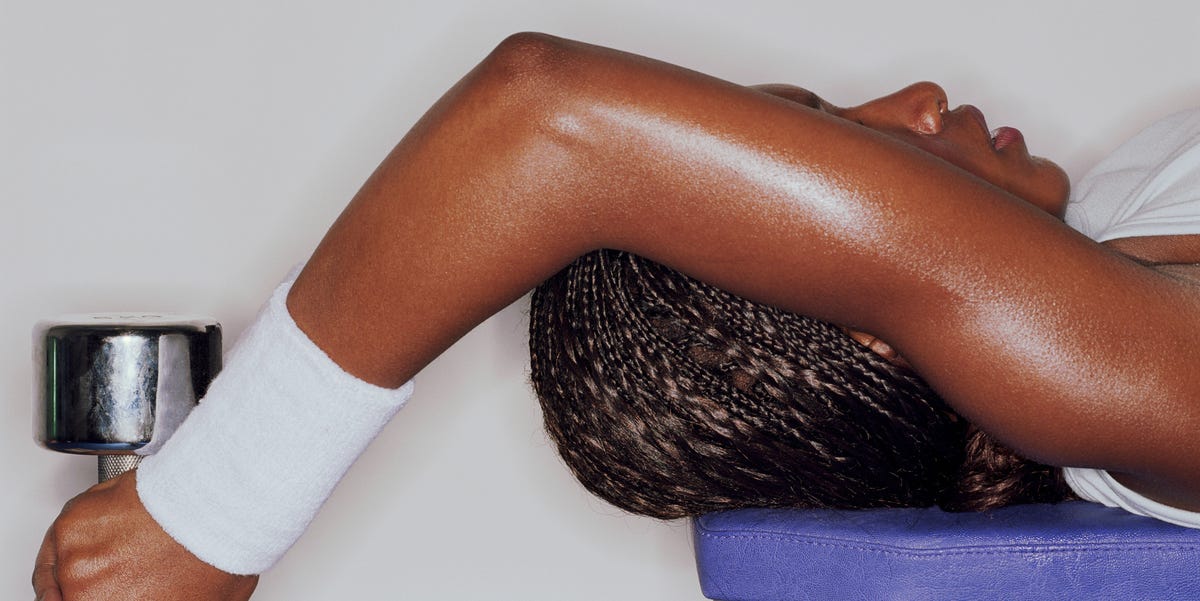Your body is burning calories all day (and night) long. By simply existing, your body uses calories. But exactly how many cals you burn just to stay alive depends on one major factor: basal metabolic rate (BMR). But what is BMR, exactly—and why is it important?
BMR is the number of calories your body uses to perform basic life-sustaining functions like breathing, growing hair, digesting food, and keeping your heart beating, says Alyssa Lombardi, CPT, an exercise physiologist and running coach. “It’s the minimum amount of calories that your body uses at rest.”
Meet the experts: Alyssa Lombardi, CPT, is a clinical exercise physiologist, personal trainer, running coach, and founder of Alyssa RunFit Coaching. Cara Carmichael, CPT, is a personal trainer, Orangetheory coach, and Precision Nutrition coach.
It’s also important to know what BMR is not. Your personal BMR number does not account for any extra energy used outside of your body’s autonomic functions. That means everything from getting out of bed to running a few miles burns calories not accounted for in your BMR. That said, exercising more (or less) can actually change your baseline BMR in the long term (we’ll get into this more below).
Without further adieu, here’s why knowing your BMR matters for your metabolism, energy, and health goals—and how to calculate it.
What To Know About BMR—And How To Calculate Yours
So, we know that BMR is the number of calories your body needs to breathe, digest, and keep your organs running without any extra movement. Understanding your own personal BMR (because it is highly individualized) gives you a clearer picture of how many calories your body truly needs and helps you make more informed decisions around weight maintenance, nutrition, and activity levels.
“Your BMR can shift as your activity level, body composition, and age change,” says Lombardi. “Checking in with it periodically can help you stay in tune with what your body needs to maintain a healthy weight.”
Everyone’s BMR is unique and depends on several factors, including:
- Height
- Weight
- Sex
- Age
- Muscle mass
- Body fat
How To Figure Out Your BMR
The gold standard for accurately measuring BMR is a DEXA scan, according to Lombardi. “This is essentially a picture of your body that will tell you the make-up of your body’s fat, muscle, and bone density,” she says. But because DEXA scans involve a low-dose X-ray and require an in-person appointment, they’re not the most accessible option.
For an easier (and free!) at-home estimate, Lombardi recommends using an online calculator like Omni Calculator, which uses the Harris-Benedict equation. It’s not perfect, since it doesn’t factor in muscle mass or body fat, but studies show online calculators like this one can still give you a solid ballpark figure.
Here’s how to estimate your BMR yourself using the Harris-Benedict equation for women:
Calculate your BMR: 655 + (9.6 x weight in kg) + (1.8 x height in cm) – (4.7 x age in years)
Worth noting: The more muscle you have, the higher your BMR will be because the more energy your body will burn at rest.
How To Improve Your BMR
Incorporating strength training into your workout and gaining muscle mass is the most effective way to change and increase your BMR, says Carmichael. “Muscle uses a lot more energy than fat while at rest, so at any given weight, the more muscle on your body, the higher your BMR.”
Carmichael suggests incorporating strength training at least twice a week to build muscle and raise your BMR. But remember, consistency is key and change does not happen overnight. “So many people look for quick fixes, but in reality, it’s about sustainability and sustainable habits.”
Changing your BMR can help boost your metabolism, lose weight, gain strength, or set an optimal meal plan, but there is not one magic number.
Your BMR can tell you a lot about your health.
Beyond upping your knowledge (and appreciation!) for how your body works, knowing your BMR can help you reach your health and fitness goals. Here are a few benefits of your BMR:
- Understanding caloric needs. Knowing your BMR can help you determine a nutrition plan and recognize your daily caloric needs, explains Carmichael. “A lot of us don’t truly know how much food we need to consume to get through the day without crashing, but your BMR can serve as a baseline,” she says. By knowing how many calories your body naturally burns, you can gauge how much you need to eat in order to gain (eat more calories than you burn), lose (eat fewer calories than you burn), or sustain weight (eat the same number of calories that you burn).
- Weight management. Whether you are looking to lose or gain weight, understanding your BMR can help speed up the process by giving you necessary information to help set a diet that aligns with your goals, says Lombardi. Once you know your BMR you can use it as a base for the number of calories needed for the day. The higher your BMR, the more calories you can consume without gaining weight, she explains.
- Tracking fitness progress. If your BMR increases, that generally means you are gaining more muscle and getting stronger, says Lombardi. Since gaining muscle is the most effective way to change your BMR, consistent strength training and tracking your BMR over time can be a great way to measure your progress and #gains.
- Improving metabolism. A high BMR is often associated with a fast metabolism and greater muscle mass, while a low BMR can hint to a slower metabolism, lower muscle mass, and higher percent of body fat, says Carmichael. “A lot of people want to increase their metabolism, but you have to understand that in order to do that, you need to build more muscle and increase your BMR,” she says.
What’s considered a “good” BMR number?
There isn’t a “good” or “bad” BMR. “Each individual has a different BMR and cannot be compared to one another,” says Carmichael. What is considered to be “healthy” varies depending on the person and their goals. The average BMR for women is around 1400 calories/day and about 1700 cal/day for men, she says.
Even if you and your workout buddy are the same age, sex, height, weight, and body composition, you still can have a different BMR. Things totally out of your control, like genetics and even organ size, impact BMR.
Does my smartwatch give an accurate BMR?
The short answer is no. Smartwatch trackers use movement, heart rate, and your height and weight to provide some calorie intel, but do not factor in muscle mass or body fat, both of which contribute to your BMR, says Cara Carmichael, CPT. “The number the watch is creating isn’t necessarily based on the individual,” she says. “It’s a more basic formula and there’s a lot of room for error.”
Even though smartwatches are not 100 percent accurate, they can give you a good starting point, adds Lombardi. But remember not to dwell on the numbers. Instead, take this information to understand your body and its necessary caloric intake.
BMR Versus RMR: There’s A Big Difference
Don’t confuse your basal metabolic rate with your resting metabolic rate (RMR). They are similar but have a slight difference. “RMR is your BMR plus a very small level of daily activity such as walking to the bathroom, getting out of bed, and eating, but essentially being at rest,” notes Lombardi.
In practice, RMR is BMR plus baseline activity—so walking to your car, getting coffee, and climbing the steps to your house are all factored into RMR. On the other hand, BMR is literally just what your body burns naturally without any activity factored in.
Andi Breitowich is a Chicago-based writer and graduate student at Northwestern Medill. She’s a mass consumer of social media and cares about women’s rights, holistic wellness, and non-stigmatizing reproductive care. As a former collegiate pole vaulter, she has a love for all things fitness and is currently obsessed with Peloton Tread workouts and hot yoga.
Read the full article here




